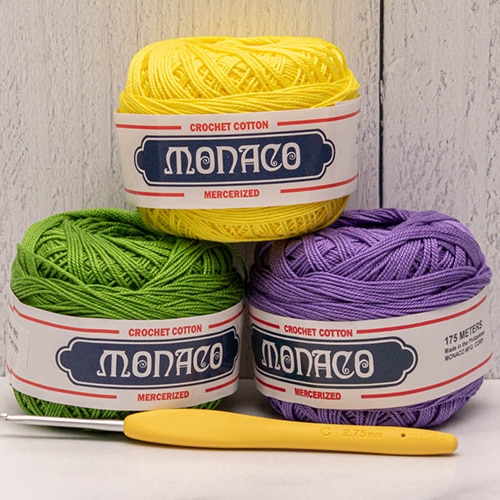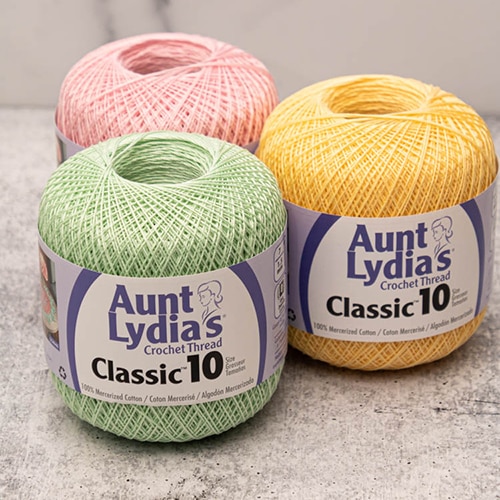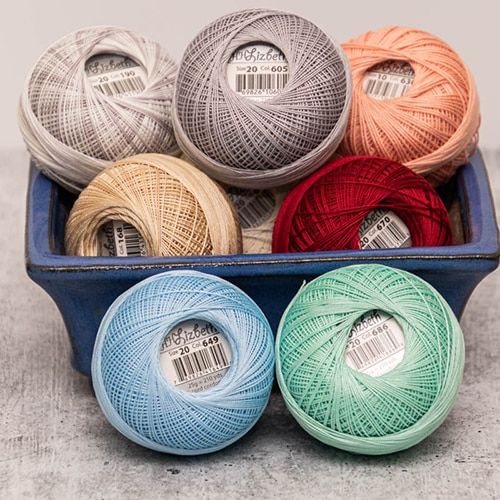Blog
Do you know what tatting is? What its used for? We explain that and more in this post.
Tatting is handcrafting technique used to make decorative edging, as well as, doilies, collars and accessories such as earnings and necklaces.
Its origins date back more than 200 years to the early 19th century. Legend has it, that the knots used in tatting were handed down by sailors, and were based on the knots used when managing boats of the fishing fleets.
This decorative knot work is called coxcombing. It was used to decorate parts of a ship during the age of sail.
The knots where given to weavers who used finer threads to make lace edgings. The edgings where then added to garments so that weavers and tailors could charge higher prices.
Modern uses of coxcombing knots are to wrap boat tillers and ships’ wheels with small diameter line to enhance the grip as well as the nautical appeal.
The knots used in coxcombing include Turk’s head knot, Flemish, French whipping, and others.
Types of Tatting
Shuttle Tatting is the earliest form of tatting. It uses a tatting shuttle to guide thread through loops to make the required knots. Originally made from ivory or metal, they are typically oval in shape and may come with a hook on one end to facilitate making the knots.
Needle Tatting uses a tatting or doll needle instead of a shuttle. A tatting needle is a long, blunt needle that does not change its thickness. The needle must match the thickness of the thread being used. If a second color is needed then a second needle is required.
Cro-Tatting combines needle tatting with crochet. The cro-tatting tool is actually a tatting needle with a crochet hook on the end. In the 19th century, “crochet tatting” patterns were published which simply called for a crochet hook. One of the earliest patterns is for a crocheted afghan with tatted rings forming a raised design. Patterns are available in English and are equally divided between yarn and thread. In its most basic form, the rings are tatted with a length of plain thread between them, as in single-shuttle tatting. In modern patterns, beginning in the early 20th century, the rings are tatted and the arches or chains are crocheted. Many people consider cro-tatting more difficult than crochet or needle tatting. Some tatting instructors recommend using a tatting needle and a crochet hook to work cro-tatting patterns. Stitches of cro-tatting (and needle tatting before a ring is closed) unravel easily, unlike tatting made with a shuttle.
Materials
In the early 1900’s fine white or ivory threads of 50 to 100 widths to an inch where used. The tread was made of silk or silk blend to allow for the easy removal of incorrect stitches.
The advent of the mercerization process strengthened cotton threads and spread their use in tatting. Newer designs from the 1920s and onward often use thicker thread in one or more colors, as well as newer joining methods, to reduce the number of thread ends to be hidden. The best thread for tatting is a “hard” thread that does not untwist readily.
Free eBook with Hundreds of Patterns
If you are interested in learning more about the history of tatting and various stitches used, including patterns and detailed instructions, click on this link to access a free eBook (not our original work but is free to distribute) called The Project Gutenberg eBook of BEETON’S BOOK OF NEEDLEWORK. The book is free to download. It is over 400 pages with lots of pictures and drawing (though bear in mind this is a very old book so don’t expect high quality images).
The Lyn’s Crafts Connection to Tatting
At Lyn’s Crafts we carry a line of crochet thread that can be used for tatting. The Lizbeth line of threads can be used by both crocheters and tatters for crafting fine edges, ear rings, flowers and other accessories. Lizbeth thread is made from 100% mercerized cotton and is perfect for tatting or crochet.
Like many of our customers, I use the Lizbeth threads for crochet. I like that the smaller sizes make for more intricate details. Being mercerized the colors are vibrant and color fast. Here is an example of something I made using one of our variegated size 20 threads.

As you can see the knots are much smaller and tighter than I would normally get used a larger thread or yarn. I love using the Lizbeth for embellishments on other projects. However, at some point I may venture into the world of tatting and share my experiences with the community.
Sources:
Isabella Beeton – http://www.gutenberg.org/files/15147/15147-h/15147-h.htm, Abb. aus Beeton’s Book of Needlework, 1870.
Wikipedia
Wikipedia contributors. “Tatting.” Wikipedia, The Free Encyclopedia. Wikipedia, The Free Encyclopedia, 1 Apr. 2018. Web. 12 Feb. 2019.









